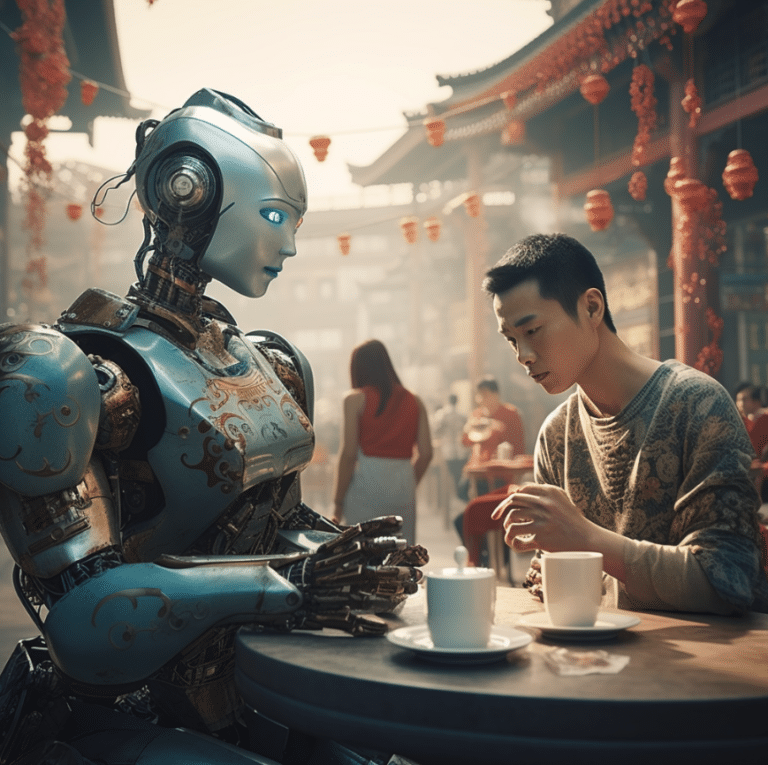The Revelation at Shanghai’s World AI Conference
Remember World Artificial Intelligence Conference in Shanghai 2023? Wasn’t there something truly captivating? Fourier Intelligence presented their GR1 humanoid robot—a lanky, jet-black marvel—at the conference, and it left an indelible mark on all who witnessed.
While the world was engrossed with AI software, especially after OpenAI’s GPT’s unveiling, wasn’t it China’s GR1 at the conference that forced us to rethink the tangible, hardware side of the future?
From industry stalwarts like Tesla to Xiaomi, the quest for the most advanced robots is unwavering. For instance, GR1’s capabilities include walking at speeds of 5 kilometers an hour and shouldering a remarkable 50 kilograms. But what’s even more awe-inspiring? How Fourier, a mere startup, overshadowed many giants in this race.
Fourier’s Genesis: More Than Just Rehab Robots
Surprisingly, Fourier didn’t start with humanoid robots. They were named after Joseph Fourier, a 19th-century mathematician. Originally birthed in Zhangjiang, Shanghai’s tech precinct, their mission was to craft rehab robots. From computerized cycles to robotic gloves, they aimed to rejuvenate human limbs.
Gu, an alumnus of Shanghai Jiao Tong University, harbored a dream: his own humanoid robot. By 2019, Fourier had stamped its authority in the world of intelligent rehab devices. Then came the pivotal decision.
With the steep costs of development and the technological barriers, why venture into the realm of humanoid robots?
Global ventures like Boston Dynamics’ Atlas or Agility Robotics’ Digit had carved a niche. But Gu was resolute. He believed he could transcend their feats.
GR1’s Journey: Lab To Spotlight
A month before its grand revelation at the conference, GR1 was budding with potential in Fourier’s lab. But 2022 saw it achieve the unimaginable. The 1.65-meter bot could walk autonomously! As the GR1 video went viral, it was met with both accolades and skepticism.
Undoubtedly, taking humanoid robots to market is Herculean. But that year, Xiaomi’s founder, Lei John, unveiled another marvel: Cyberon. Though not as agile as Atlas or Digit, it was leagues ahead in its own right. Coupled with depth vision, Cyberon could interpret human emotions and discern 85 ambient sounds. It seemed almost sentient.

With Cyberon’s advancements, don’t we marvel at how close AI is inching towards mimicking human behavior?
Enter Elon Musk with Tesla’s Optimus prototype, a bot crafted for repetitive tasks. These robots, empowered by avant-garde sensors, are becoming increasingly sentient. Gu envisions robots as more than tools—they could be our companions. Isn’t that a revolutionary thought?
The Road Ahead: A Harmonious Coexistence?
The introduction of large language models could shift the paradigm. While current humanoid robots are unparalleled, they aren’t quite “human” in cognition. But what if that changed?
Could these models endow robots with a human-like logical reasoning?
Gu’s aspiration is lucid: Fourier perfects the robot’s physique, while AI maestros craft its intellect. With potential collaborations on the horizon, Gu’s optimism about GR1’s future production is palpable.

Musk hinted at production commencement in 2023, but GR1 sights are set further. He envisions Fourier’s humanoid robots not only equaling but surpassing their rehab counterparts in revenue. Their roles? Assisting the elderly, imparting education, and being the perfect hosts.
Yet, as we stand at this crossroads of technology and human advancement, one lingering question remains:
How long until these humanoid prodigies become an integral part of our daily tapestry?
